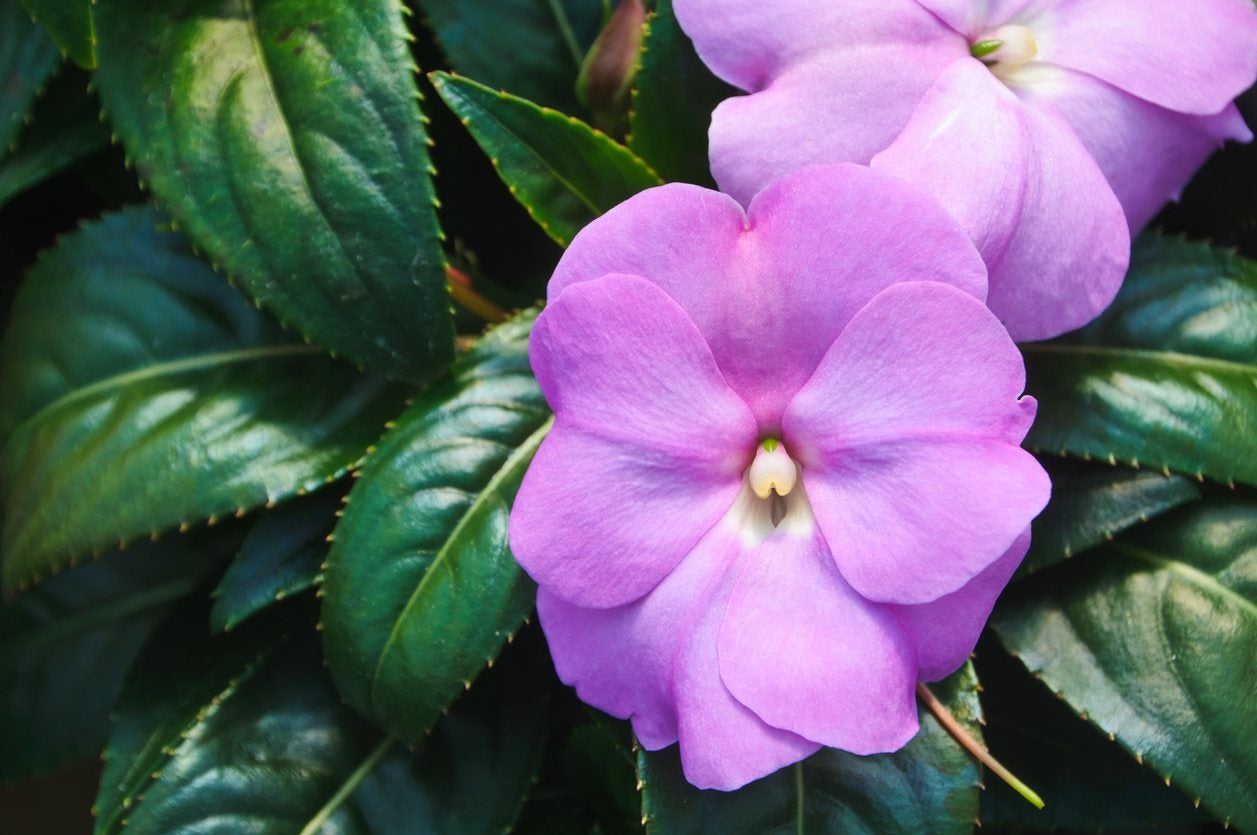Seed Propagating New Guinea Impatiens – Can You Grow New Guinea Impatiens From Seeds


Year after year, many of us gardeners go out and spend a small fortune on annual plants to brighten up the garden. One annual favorite that can be quite pricey because of its bright flowers and variegated foliage is New Guinea impatiens. No doubt many of us have considered growing these higher priced plants by seed. Can you grow New Guinea impatiens from seed? Continue reading to learn about planting New Guinea impatiens seeds.
Can You Grow New Guinea Impatiens from Seeds?
Several varieties of New Guinea impatiens, like many other hybridized plants, do not produce viable seed, or they produce seed that reverts back to one of the original plants used to create the hybrid. This is why many plants, including most New Guinea impatiens, are propagated by cuttings and not by seed. Propagating by cuttings produces exact clones of the plant the cutting was taken from. New Guinea impatiens have become more popular than common impatiens because of their showy, colorful foliage, their tolerance of sunlight, and their resistance to some of the fungal diseases that can afflict impatiens. While they can tolerate more sunlight, they really perform best with morning sun and shade from the hot afternoon sun. In a perfect world, we could just fill a part shade bed or planter with New Guinea impatiens seeds, and they'd grow like wildflowers. Unfortunately, it's not that easy. That said, certain varieties of New Guinea impatiens can be grown from seed with a little extra care.
Seed Propagating New Guinea Impatiens
New Guinea impatiens in the Java, Divine, and Spectra series can be grown from seed. The varieties Sweet Sue and Tango also produce viable seed for plant propagation. New Guinea impatiens cannot tolerate any frost or chilly night temperatures. Seeds must be started in a warm indoor location 10 to 12 weeks before the expected last frost date in your area. For proper germination of New Guinea impatiens, temperatures should remain consistently between 70 and 75 degrees F. (21-24 C.). Temperatures above 80 degrees F. (27 C.) will produce leggy seedlings and also need an adequate light source to germinate. Seeds are planted at a depth of about ¼ to ½ inch (approximately 1 cm. or slightly less). Seed grown New Guinea impatiens take approximately 15 to 20 days to germinate.
Sign up for the Gardening Know How newsletter today and receive a free copy of our e-book "How to Grow Delicious Tomatoes".

Darcy is a former contributor to Gardening Know How. She is a professional landscape designer and gardening writer with experience in plant sales. An avid gardener, Darcy has a passion for sharing practical tips to help others grow.